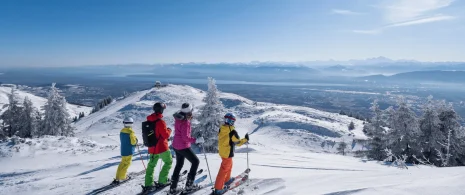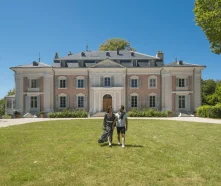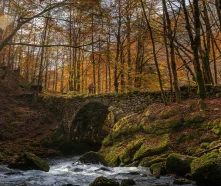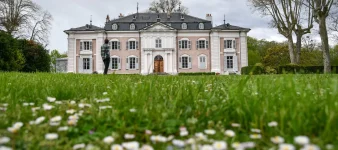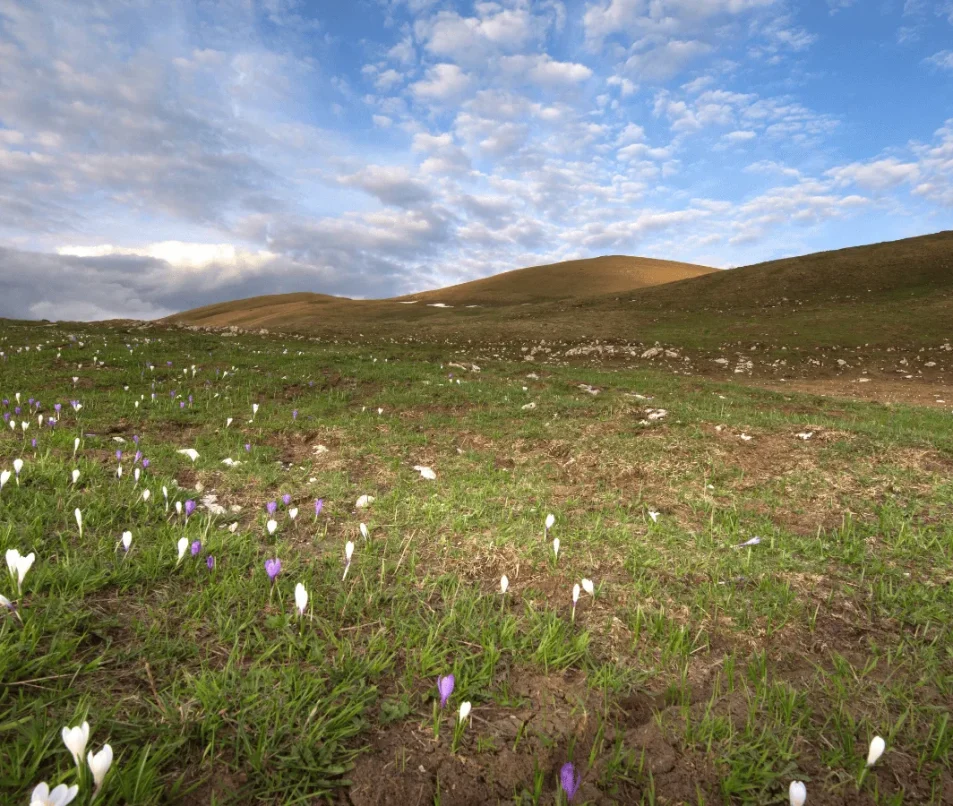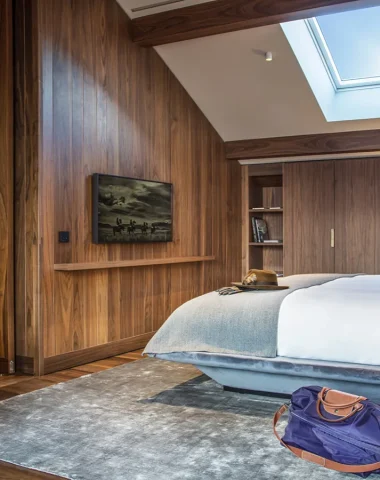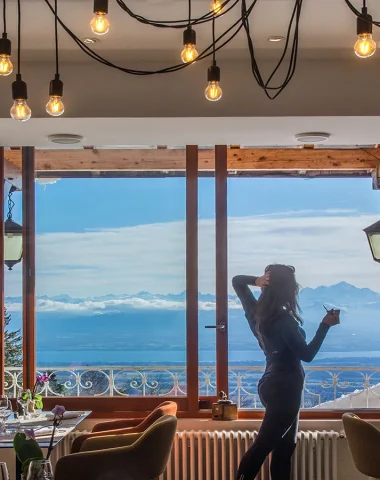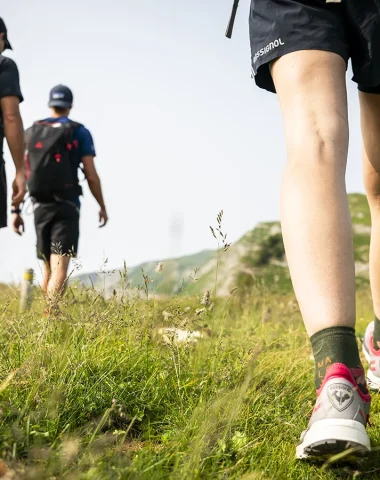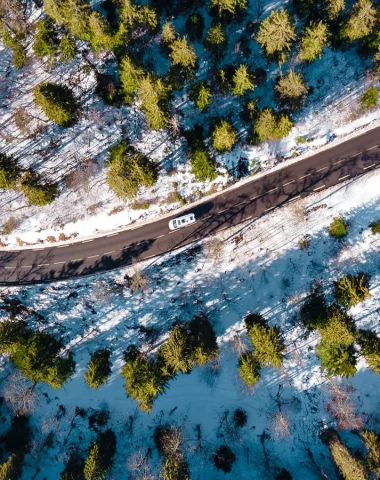The largest terrestrial nature reserve in mainland France, it covers almost 10,909 hectares, offering a protected area where flora and fauna can flourish in complete tranquillity. Here, nature reveals itself in all its splendour, offering visitors a unique experience in the heart of a preserved territory.
What is a National Natural Reserve ?
A national natural reserve is an area protected by ministerial regulations, with the aim of conserving and protecting its natural wealth: flora, fauna, minerals, etc.
In the Pays de Gex – Monts Jura in the Ain department, we have the Haute Chaîne du Jura National Nature Reserve, or RNNHCJ (yes, that’s a bit too long to write 😉 ).
A remarkable natural heritage
As we explained above, the RNNHCJ covers almost 11,000 hectares! It is one of the largest in mainland France. In fact, it ranks 4th in terms of surface area. This vast area is home to a huge diversity of flora and fauna. The species, environments and landscapes that make it up are all remarkable, but unfortunately fragile.
Key figures:
- Flora: 1,466 plants have been recorded in the nature reserve. Of these, 85 species are on the protection lists and 6 species are protected at national level.
- Fauna: 205 vertebrate species have been recorded in the RNNCHJ. Among the best-known and most emblematic species is the capercaillie, which you’re sure to know!
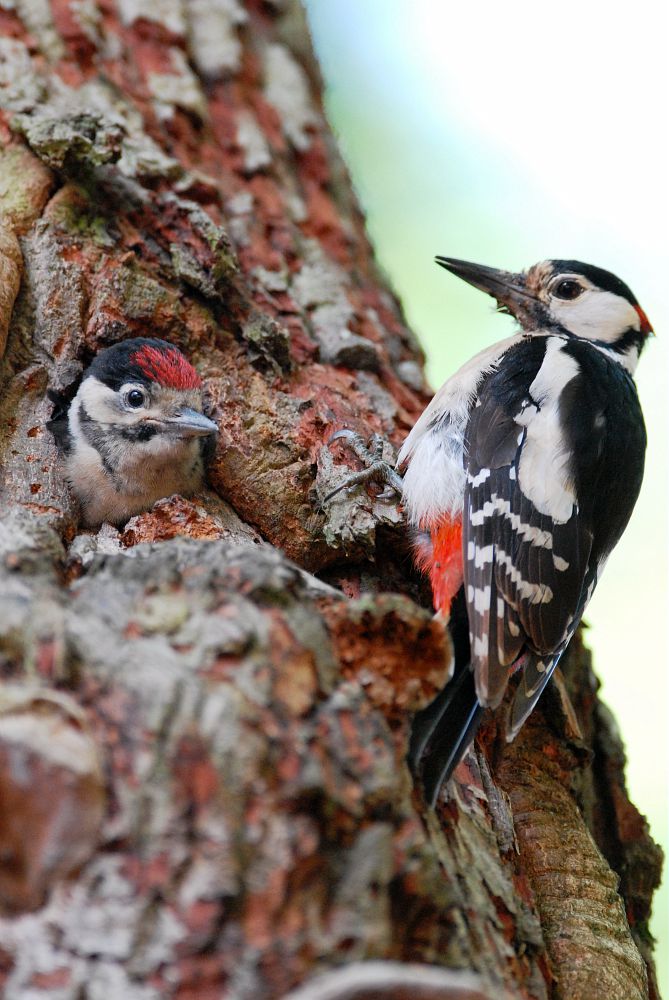
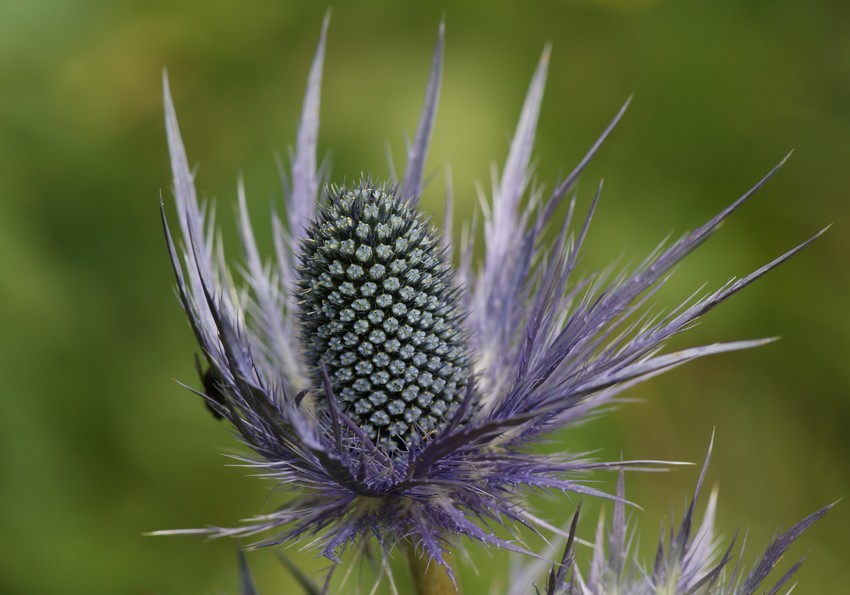
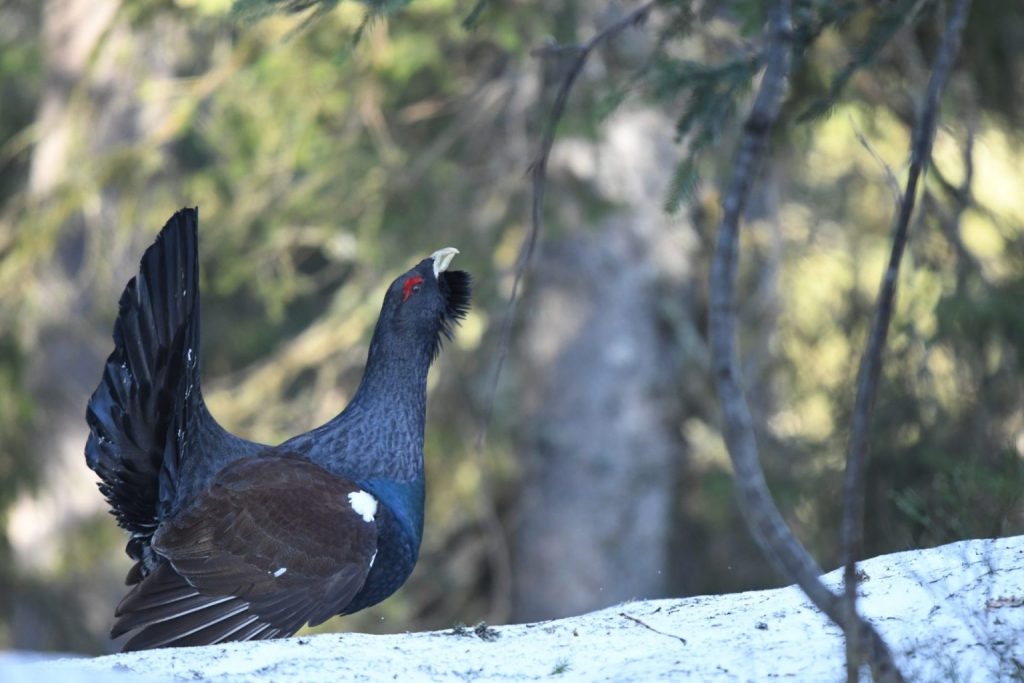
Incidentally, the RNNHCJ logo features a capercaillie. So you could say it’s our territory’s mascot!
Over the course of the seasons, this little world lives side by side with you, walkers and hikers, as well as with mountain pastoralists, hunters and foresters. To ensure that the cohabitation lasts, everyone has to adapt their habits. This is why regulations have been created.
Regulations to protect
By changing our individual behaviour and adapting it to the environment in which we live, we can all help to preserve this remarkable area.
What regulations need to be complied with?
The High Jura is classed as a National Natural Reserve by decree n°93-261 of 26th February, 1993
The decree is drawn up in three parts :
– The demarcation of the Natural Reserve and the list of plots within its perimeter
– The management of the reserve and the creation of the consultative committee
– The regulation itself
There are several prohibitions in the RNN, the most important of which are listed below:
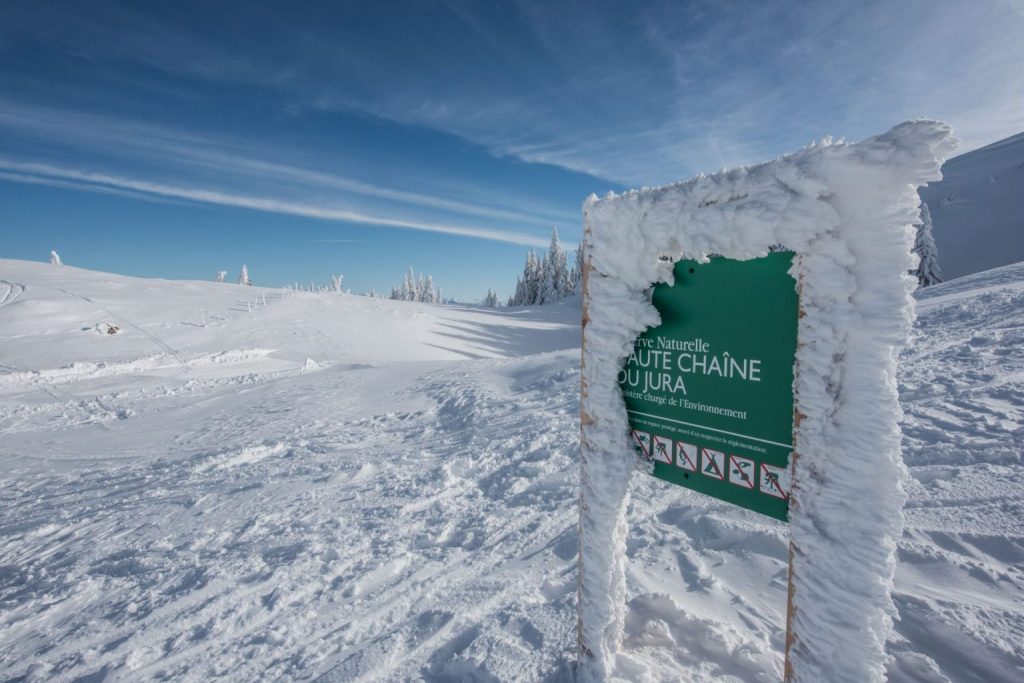
- Dogs are forbidden, even on a lead, as their barking can force wild animals to leave their refuge, particularly in winter. The smell of your dog can even be enough to disturb wildlife.
- Dropping litter is prohibited, as it pollutes the environment and can cause injury to wildlife.
- Picking plants is prohibited as some are protected. However, the picking of medicinal plants, berries, wild berries and mushrooms is permitted, subject to the general regulations.
- Camping of any kind is prohibited to limit disturbance to wildlife, as the area is already very busy during the day.
- Motor vehicle traffic is restricted to ensure the tranquillity of wildlife and livestock.
- For a full list of prohibited activities, click here!
Focus on Resting Areas for Wildlife
We thought it was important to explain why Resting Areas for Wildlife exist and how they are set up.
Certain seasons, such as winter and spring, bring difficult times for the RNN’s wildlife.
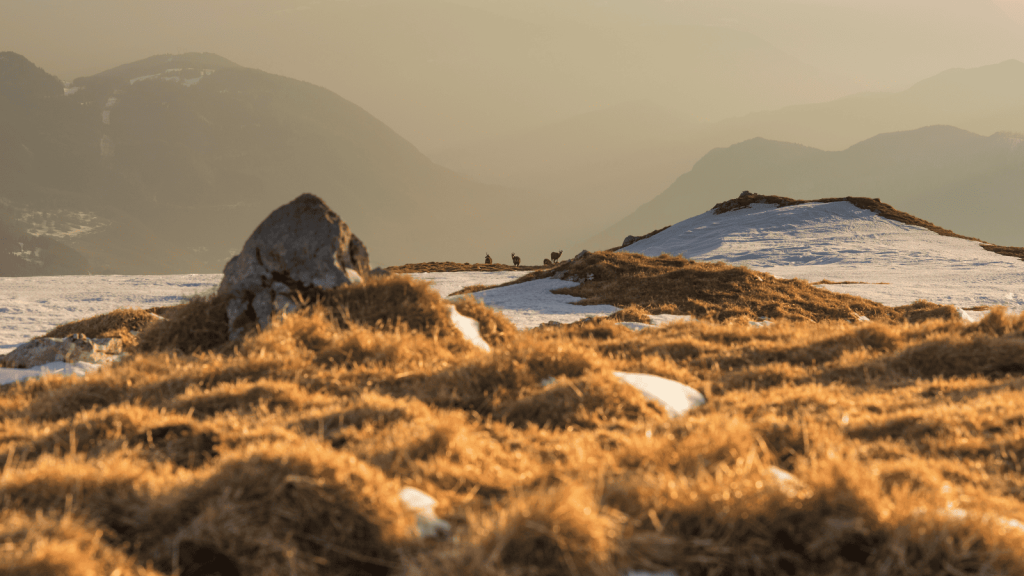
There are various reasons for this
- Extreme weather conditions, which can make animals’ food resources scarce during the winter.
- The retreat of the snow and milder temperatures in spring mean that wildlife is becoming more active. It’s a time of parades, songs …
Consequently, to ensure the tranquillity of wildlife and avoid dramatic and irreversible consequences, quiet zones have been set up.
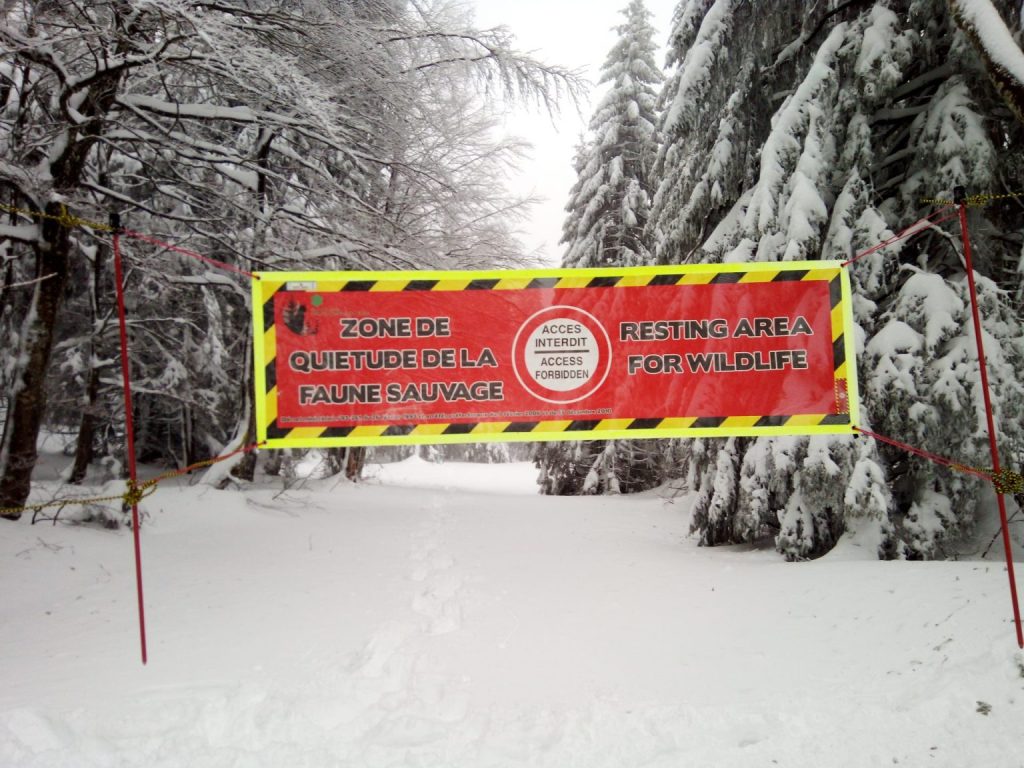
These are areas where no physical activity is allowed, whether on foot, on snowshoes or on skis. However, specially signposted trails limiting disturbance are set up during this period. It is forbidden to leave these trails.
This restriction is in place from 15 December to 30 June (15 December to 15 May for the Platières site) each year.
To find out where Resting Areas for Wildlife are, please consult the RNN map!
Keep your eyes peeled – nature has so much to offer!
